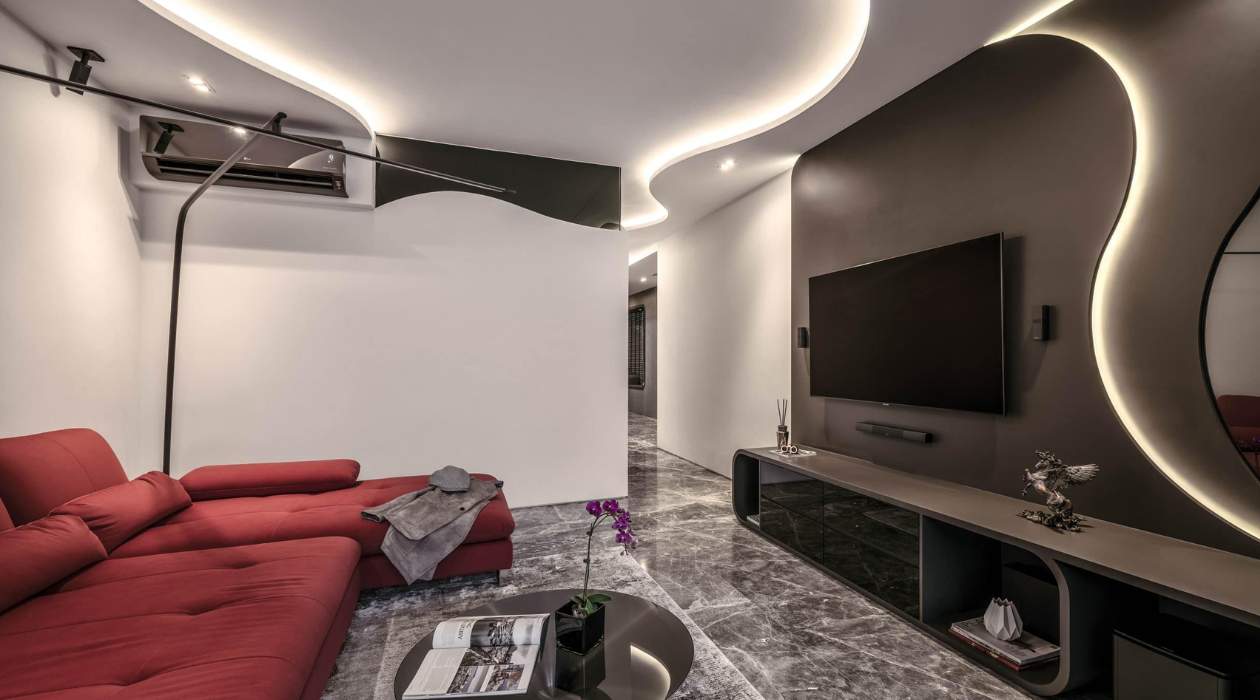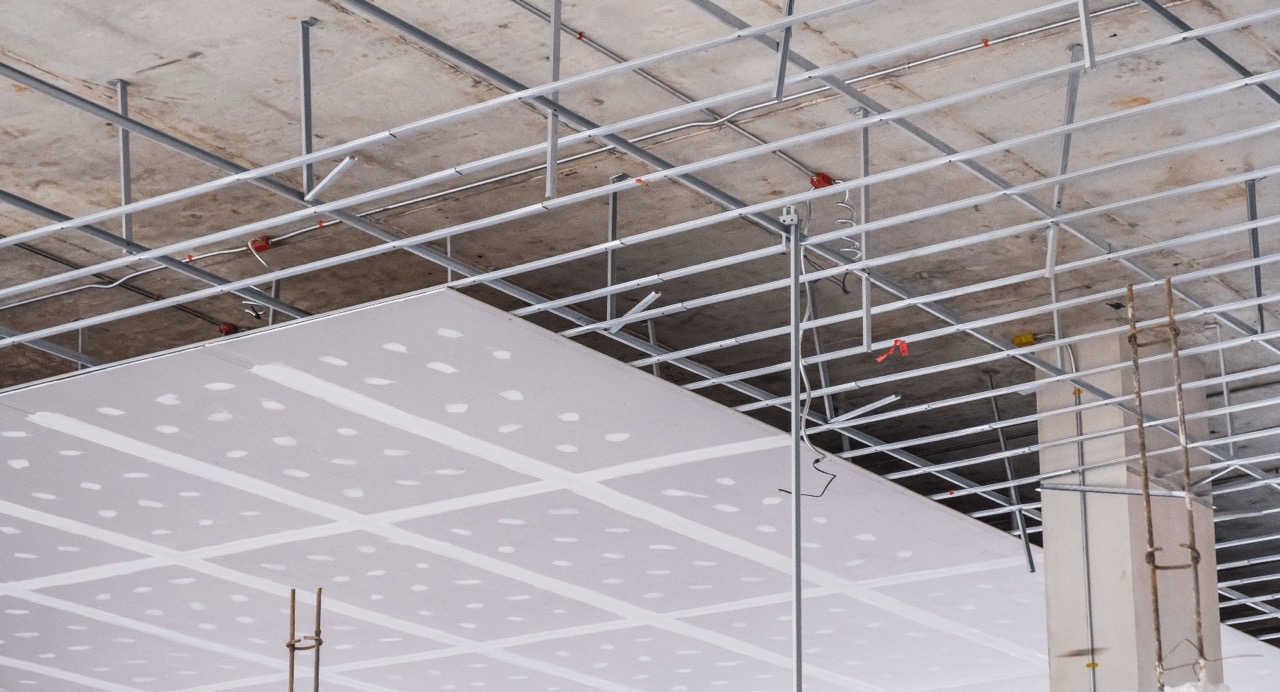

Articles
What Is A Bamboo Ceiling
Modified: January 18, 2024
Discover what the bamboo ceiling is and how it affects professionals of Asian descent in this insightful collection of articles. Explore this important issue today and gain a deeper understanding.
(Many of the links in this article redirect to a specific reviewed product. Your purchase of these products through affiliate links helps to generate commission for Storables.com, at no extra cost. Learn more)
Introduction
The term “Bamboo Ceiling” refers to the invisible barrier that Asian individuals face in their professional lives, hindering their advancement and limiting their opportunities for career growth. Much like the glass ceiling that affects women and other underrepresented groups, the Bamboo Ceiling is a concept that highlights the systemic challenges and biases faced specifically by individuals of Asian descent.
Despite being highly educated, skilled, and hardworking, many Asian professionals find themselves hitting an unspoken ceiling, where further progress within their organizations becomes challenging. This phenomenon has drawn attention to the need to address diversity and inclusion not only in terms of race and gender but also with respect to ethnicity and cultural backgrounds.
The Bamboo Ceiling manifests in various industries and sectors, including business, technology, finance, academia, and the arts. Asian individuals often encounter hurdles in accessing leadership positions, securing promotions, and receiving equal recognition for their contributions. This issue not only affects Asian professionals personally but also has wider implications for organizational culture and societal progress.
The Bamboo Ceiling represents a complex interplay of factors, ranging from unconscious biases and stereotypes to cultural differences and lack of representation. It is important to acknowledge and understand the impact of this barrier in order to work towards creating inclusive work environments where all individuals have equal opportunities to succeed.
In this article, we will explore the definition and impact of the Bamboo Ceiling, delve into the experiences of Asian individuals, examine the contributing factors, and discuss strategies to overcome this barrier. By shedding light on this issue, we hope to foster awareness and inspire actions that lead to a fairer and more equitable professional landscape for all.
Key Takeaways:
- The Bamboo Ceiling is a real and significant barrier that limits the advancement of Asian professionals in their careers, rooted in unconscious biases and cultural differences. Overcoming it requires education, representation, and continuous evaluation within organizations.
- The impact of the Bamboo Ceiling extends beyond individuals, affecting organizational culture and societal progress. By recognizing and addressing this barrier, organizations can create a more diverse, innovative, and inclusive workforce that drives success.
Read more: What Is Bamboo Grass
Definition of Bamboo Ceiling
The term “Bamboo Ceiling” refers to the subtle and often unrecognized barriers that hinder Asian individuals from advancing in their careers and reaching positions of leadership within organizations. It is a metaphorical concept that highlights the limitations and biases faced by individuals of Asian descent in professional settings.
Similar to the glass ceiling, which primarily affects women and other underrepresented groups, the Bamboo Ceiling is a form of invisible discrimination that hampers upward mobility for Asian professionals. Despite their qualifications, skills, and accomplishments, Asian individuals encounter challenges and barriers that prevent them from reaching the highest levels of leadership.
The Bamboo Ceiling encompasses a range of obstacles, including stereotypes, unconscious biases, lack of representation, cultural differences, language barriers, and limited access to networking opportunities. These factors create an environment where the advancement of Asian professionals is hindered, perpetuating a cycle of inequality and underrepresentation in the workplace.
Unlike overt forms of discrimination, the Bamboo Ceiling is subtle and often rooted in unconscious biases. It can manifest through microaggressions, such as assumptions about Asian individuals’ abilities, cultural stereotypes, or expectations based on their ethnic background. These biases can lead to Asians being overlooked for promotions, excluded from important decision-making processes, or boxed into stereotypical roles.
It is important to note that the Bamboo Ceiling is not a reflection of the capabilities or potential of Asian individuals but rather a reflection of systemic biases and barriers within organizations and society at large. Overcoming the Bamboo Ceiling requires a concerted effort to dismantle biases, promote diversity and inclusion, and create a more equitable work environment.
By recognizing and understanding the concept of the Bamboo Ceiling, we can work towards breaking down these barriers and creating a workplace that recognizes and rewards talent, regardless of a person’s ethnicity or cultural background. This starts with acknowledging the existence of the Bamboo Ceiling and committing to addressing it through inclusive practices, equal opportunities, and providing support and resources for Asian professionals.
Impact of Bamboo Ceiling
The Bamboo Ceiling has significant implications not only for the individuals directly affected but also for organizations and society as a whole. By limiting the opportunities for Asian professionals to advance in their careers, the Bamboo Ceiling hinders diversity, inclusion, and innovation within organizations. Here are some of the key impacts of the Bamboo Ceiling:
- Limited Career Advancement: The Bamboo Ceiling prevents Asian individuals from climbing the corporate ladder and reaching higher positions within their organizations. This limits their ability to utilize their full potential, contribute at a strategic level, and have a meaningful impact in decision-making processes.
- Underrepresentation in Leadership: Due to the Bamboo Ceiling, Asian professionals are vastly underrepresented in leadership positions. This lack of representation not only denies Asian individuals the opportunity to influence organizational policies and directions but also perpetuates stereotypes and biases by reinforcing the notion that certain ethnicities are less capable of assuming leadership roles.
- Loss of Talent and Diversity: Organizations that fail to address the Bamboo Ceiling risk losing out on diverse talent that could contribute fresh perspectives, insights, and innovative solutions. By not providing equal opportunities for Asian professionals, organizations miss out on the full range of skills, experiences, and knowledge that can drive growth and success.
- Negative Organizational Culture: The presence of the Bamboo Ceiling can foster a toxic and discriminatory organizational culture. Asian professionals may face workplace discrimination, stereotyping, microaggressions, and feelings of alienation, which can contribute to low morale, reduced job satisfaction, and an overall negative work environment.
- Reinforcement of Stereotypes: The existence of the Bamboo Ceiling perpetuates harmful stereotypes about Asian individuals’ capabilities, ambition, and suitability for leadership positions. These stereotypes undermine the confidence and aspirations of Asian professionals, creating a self-fulfilling prophecy where they are held back due to biased assumptions and expectations.
- Impact on Mental Well-being: Dealing with the challenges of the Bamboo Ceiling can have a profound impact on the mental health and well-being of Asian professionals. Constantly hitting a wall in terms of career progression, facing bias and discrimination, and feeling undervalued and overlooked can lead to stress, anxiety, and a sense of disillusionment.
It is crucial for organizations to recognize and address the impact of the Bamboo Ceiling in order to create a more inclusive and equitable environment. By dismantling the barriers that hinder the advancement of Asian professionals, organizations can benefit from broader perspectives, increased innovation, and a stronger, more diverse workforce.
Experiences of Asian Individuals
The experiences of Asian individuals within the context of the Bamboo Ceiling can vary, but many share common themes and challenges. These experiences shed light on the barriers, biases, and limitations that Asian professionals face in their careers. Here are some key aspects of Asian individuals’ experiences with the Bamboo Ceiling:
- Underestimation of Skills and Talents: Asian individuals often face the stereotype of being hardworking but lacking in leadership qualities or strategic thinking. This bias can result in their skills and abilities being underestimated, leading to missed opportunities for growth and advancement.
- Unspoken Expectations and Cultural Norms: Asian professionals may encounter unspoken expectations rooted in cultural norms that can limit their opportunities. For example, the concept of “quiet leadership” or exhibiting humility can be perceived as a lack of confidence or assertiveness by Western standards, contributing to their exclusion from leadership roles.
- Model Minority Myth: Asian individuals are often labeled as the “model minority,” a stereotype that portrays them as high-achieving, obedient, and successful without facing significant obstacles. This myth not only overlooks the diversity within the Asian community but also downplays the challenges they face and reinforces the idea that they do not require support or equal opportunities.
- Double Standards: Asian individuals may encounter double standards in their career journeys. For instance, they may be expected to demonstrate exceptional performance to receive the same recognition and opportunities as their non-Asian counterparts. Conversely, any mistake or failure can be held against them as a reflection of their entire culture or community.
- Diminished Visibility and Voice: Asian professionals can often find themselves invisible or overlooked in meetings, decision-making processes, and high-profile projects. Their ideas and contributions may be dismissed or appropriated without due credit, further marginalizing their impact and hindering their professional growth.
- Reluctance to Assert: Due to cultural norms or fear of backlash, Asian individuals may be reluctant to assert themselves, negotiate for promotions or pay raises, or speak up about inequalities they experience. This reluctance can further perpetuate the Bamboo Ceiling, as it allows biases and disparities to go unaddressed.
These experiences highlight the need for organizations to address the biases, stereotypes, and barriers that exist within their structures and processes. Creating a more inclusive and equitable workplace requires valuing and recognizing the unique perspectives, talents, and contributions of Asian professionals, allowing them to thrive and reach their full potential.
The bamboo ceiling refers to the barriers that Asian Americans face in career advancement, often due to stereotypes and discrimination. To break through this ceiling, seek out mentors, build a strong network, and advocate for yourself.
Factors Contributing to Bamboo Ceiling
The Bamboo Ceiling is influenced by a variety of factors, many of which are deeply ingrained in societal norms and organizational structures. Understanding these contributing factors is crucial for addressing the barriers that prevent Asian individuals from advancing in their careers. Here are some key factors that contribute to the Bamboo Ceiling:
- Unconscious Biases: Unconscious biases are deeply ingrained stereotypes or prejudices that affect decision-making processes, often without individuals realizing it. These biases can lead to Asian professionals being overlooked for promotions, opportunities, or leadership roles, based on assumptions about their abilities, communication styles, or suitability for certain positions.
- Lack of Representation: The underrepresentation of Asian individuals in leadership positions perpetuates a cycle of the Bamboo Ceiling. When there are few role models or mentors who share a similar cultural background, it can be challenging for Asian professionals to envision their own leadership paths. This lack of representation also contributes to the perpetuation of stereotypes and biases.
- Cultural Differences: Cultural differences, such as communication styles, leadership approaches, and expectations of humility, can be misinterpreted or undervalued in organizations. Asian professionals may opt for collaborative decision-making or showcase humility, which can be perceived as a lack of assertiveness or confidence, limiting their visibility in leadership roles.
- Language Barriers: Fluency in English or proficiency in the dominant language of a workplace can be a contributing factor to the Bamboo Ceiling. Asian professionals who do not speak English as their first language may face challenges in expressing themselves or articulating their ideas, leading to their skills and contributions being undervalued.
- Limited Networking Opportunities: Building professional networks and relationships is crucial for career advancement. However, Asian individuals may face limited access to networking opportunities due to exclusion from informal networks, bias in mentorship programs, or cultural differences that affect their ability to navigate social interactions in the workplace.
- Perpetuation of Stereotypes: Stereotypes about Asian individuals, such as being hardworking but lacking in leadership skills or being better suited for technical rather than managerial roles, contribute to the Bamboo Ceiling. These stereotypes can influence decision-makers and result in biased evaluations and limited opportunities for Asian professionals to demonstrate their full capabilities.
Addressing the factors that contribute to the Bamboo Ceiling requires a multi-faceted approach, involving education, awareness, and systemic changes within organizations. By promoting diversity, inclusion, and cultural understanding, organizations can dismantle biases, provide equal opportunities, and create a more equitable professional environment for Asian professionals to thrive.
Read more: What Are Bamboo Pillows Good For
Overcoming Bamboo Ceiling
While the Bamboo Ceiling presents significant challenges for Asian professionals, there are strategies and actions that individuals and organizations can take to break through this barrier and create a more inclusive and equitable workplace. Here are some key approaches to overcoming the Bamboo Ceiling:
- Education and Awareness: Building awareness about the Bamboo Ceiling within organizations is crucial for fostering change. By educating employees about unconscious biases, cultural differences, and the experiences of Asian professionals, organizations can begin to challenge existing stereotypes and foster a more inclusive environment.
- Representation and Mentorship: Organizations should actively promote representation and diversity in leadership positions. This involves implementing mentorship programs specifically designed to support Asian professionals, creating opportunities for networking, and providing visible role models who can inspire and guide aspiring leaders.
- Inclusive Hiring and Promotion Practices: Organizations need to ensure that their hiring and promotion processes are fair and unbiased. This can be achieved by implementing blind recruitment techniques, using diverse interview panels, establishing clear criteria for promotion, and providing equal opportunities for all employees to showcase their skills and abilities.
- Cultural Sensitivity Training: Cultural sensitivity training can help bridge the gap between different cultural norms and expectations. By providing employees with the tools to understand and appreciate diverse perspectives, organizations can foster a more inclusive and collaborative work environment that values and utilizes the unique strengths of all individuals.
- Empowering Asian Professionals: Organizations should create a supportive and inclusive environment that empowers Asian professionals to assert themselves and take on leadership roles. This can be achieved through targeted training programs, leadership development initiatives, and platforms for Asian professionals to share their ideas and contributions.
- Building Allies and Advocates: Promoting allyship and advocacy is essential for addressing the Bamboo Ceiling. By encouraging individuals from diverse backgrounds to be allies for Asian professionals, organizations can create a collective effort to challenge biases, amplify voices, and advocate for equal opportunities.
- Continuous Evaluation and Improvement: Overcoming the Bamboo Ceiling requires ongoing evaluation and improvement of organizational practices. Regularly reviewing policies, addressing feedback, and tracking the progress of diversity and inclusion initiatives can help identify areas for improvement and ensure that efforts to overcome the Bamboo Ceiling are sustained.
By implementing these strategies, organizations can break down the Bamboo Ceiling and create an environment where Asian professionals have equal opportunities to succeed and thrive. Overcoming the Bamboo Ceiling not only benefits individuals but also leads to a more diverse, innovative, and inclusive workforce that drives organizational success.
Conclusion
The Bamboo Ceiling is a real and significant barrier that limits the advancement of Asian professionals in their careers. It is a systemic issue rooted in unconscious biases, stereotypes, and cultural differences within organizations and society. However, there are steps that can be taken to overcome this barrier and create a more inclusive and equitable professional landscape.
Recognizing and acknowledging the existence of the Bamboo Ceiling is the first step towards addressing this issue. Organizations must commit to promoting diversity, inclusion, and cultural understanding. By challenging unconscious biases, providing equal opportunities, and fostering an environment that values all individuals, organizations can dismantle the barriers that hinder Asian professionals’ progress.
Building awareness and educating employees about the Bamboo Ceiling can greatly contribute to overcoming this barrier. Training programs, mentorship initiatives, and representation in leadership positions can empower Asian professionals and provide them with the support and guidance needed to advance in their careers.
Cultural sensitivity training and promoting allyship can help bridge the gap between different cultural norms and expectations, creating a work environment that is inclusive and welcoming for everyone. Organizations should also continuously evaluate their practices, review policies, and track progress to ensure that efforts to overcome the Bamboo Ceiling are sustained and impactful.
Overcoming the Bamboo Ceiling requires a collective effort from individuals, organizations, and society. Breaking down this barrier not only benefits Asian professionals but also leads to a more diverse workforce that brings fresh perspectives, creativity, and innovation to the table. By addressing the Bamboo Ceiling, organizations can tap into the full potential of their employees, foster a culture of inclusivity, and drive organizational success.
It is only through understanding, empathy, and proactive action that we can create a world where the Bamboo Ceiling – and all barriers that limit opportunities based on race or ethnicity – no longer exist. Let us work together to break down the Bamboo Ceiling and create a future where equal opportunities are available to all.
Frequently Asked Questions about What Is A Bamboo Ceiling
Was this page helpful?
At Storables.com, we guarantee accurate and reliable information. Our content, validated by Expert Board Contributors, is crafted following stringent Editorial Policies. We're committed to providing you with well-researched, expert-backed insights for all your informational needs.















0 thoughts on “What Is A Bamboo Ceiling”